News items are also highly beneficial for search engine optimization (SEO). Websites that publish timely and relevant content are more likely to be favored by search engines, resulting in improved rankings. News articles are often shared across social media platforms and linked from other sites, generating backlinks and driving organic traffic. This increased visibility not only helps attract new visitors but also establishes the site as an authoritative source in its field. By integrating news into the website, businesses can stay relevant in search results and ensure a steady flow of traffic.
Read More
Contents :
Behaviour
Breastfeeding and Breastmilk Benefits
Connecting and Communicating
Development
Family Life
Health and Daily Care
Play and Learning
Safety
Social Media and Digital Technology
Sleep
About Children and Baby Behaviours
Your child's behaviours depend on whether or not you and other caregivers give them what they need for healthy development, such as warmth, loving and responsive attention, comfort, food, daily care, time for gentle play and learning, and so on.
This means that a lot of your child’s behaviour is about:
As you spend time with your child and get to know them, you’ll find it to be an easier task to understand your child's behaviour and what it's telling you.
When you respond consistently, gently and lovingly to your child’s behaviour, it builds your relationship and lays the foundation for your child’s development and well-being.
Newborns and Babies Key factors:
Newborn Bonding and What to Expect
Newborn Parents Support and Help
About Toddlers' Behaviour
About Preschool Children's Behaviour
About School-Age Children's Behaviour
BREASTMILK AND BREASTFEEDING
Breastmilk and Breastfeeding Benefits For Newborns and Babies
Key factors
Why are Breastmilk and Breastfeeding Advised for Both Mother and Baby?
Breastfeeding: Why it's Good Video
FAQ's About Breastfeeding
CONNECTING AND COMMUNICATING
Babies, Newborns, Toddlers, Preschoolers and School-Age Children
Key factors
DEVELOPMENT
Newborn and Baby Development
Toddlers, Preschool and School-age Children Development
FAMILY LIFE
Family Life For Children of All Ages
HEALTH AND DAILY CARE
Health and Daily Care
Newborn and Baby - Care and cleaning for your baby’s nails and umbilical cord
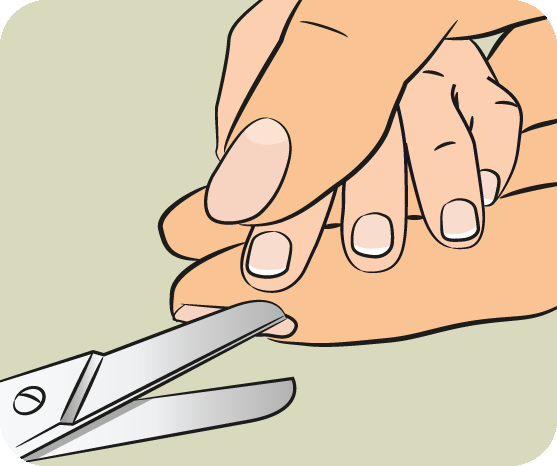
Trim your baby’s nails using special baby nail scissors or an emery board. Have someone hold your baby while you trim. Suggestable times to try trimming are when your baby is asleep, in the highchair or listening to a favourite song.

Remember to wash your hands before cleaning your baby’s umbilical cord. Clean the area with water. Make sure the stump is dry after bathing. To help the stump heal, avoid covering it with plastic pants or nappies.
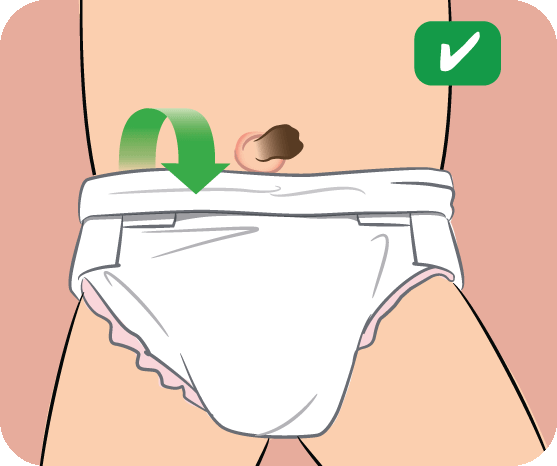
Fold nappies away from the stump if possible. Avoid anything touching the cord stump whenever possible.
Toddlers, Preschool Children and School Age Children Hygiene
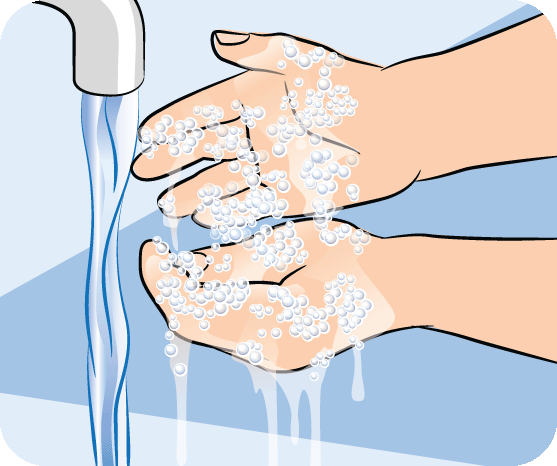
Hand-washing will work to stop the spread of germs. Teach your child to wash hands after sneezing, coughing or blowing nose, before touching food, after toileting, after being in public places, and after being near sick people.
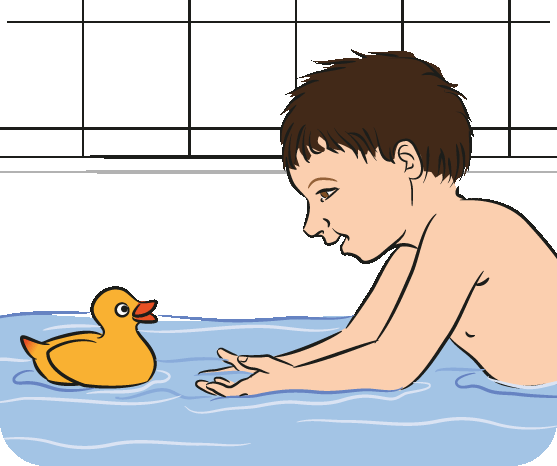
Regular baths or showers keep your child clean and healthy. Bathing at the end of the day can also be part of a bedtime routine. Make the bath fun with games and toys. Remember to never leave your child alone in the bath.
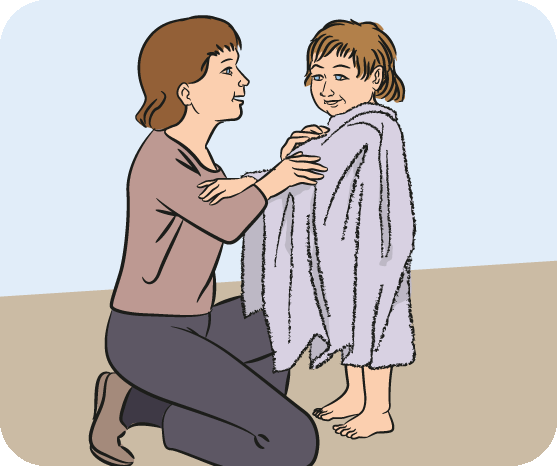
After bathing, gently rub your child dry with a towel or flannel. Dry all over your child’s body. Drying before getting dressed can help to prevent rashes. In warmer weather, your child can air-dry before dressing.
PLAY
Play and Learning For Children of All Ages
SAFETY
Safety for Children of All Ages
SOCIAL MEDIA AND DIGITAL TECHNOLOGY
Social Media Safety and Precautions for Children of All Ages
Babies and Toddlers
For babies, it is very exhausting to watch screens. Some babies will react negatively to screens, shown by turning their heads and if they are too young to, may show signs of distress.
Toddlers also get tired from too much screen-time, and may walk away when feeling so.
As for young children, they are unable to understand advertisments, companies may use this to their advantage with bright colours and happy jingles to make themselves more recognisable and start 'brand loyalty'
Preschoolers: TV, Social Media, Video Games and Movies
Scary Visual Images
- Imagery of monsters, nasty animals or horrible faces can remain in a child's head for a long time. This may stay this way despite the other good characters in the story.
- Children can be frightened when seeing a good character transform into a bad one.
- Additionally, scary images or scenes on the news can upset preschoolers. For example, they might be worried by images of war, natural disasters, violence, accidents or fires.
Violent Images
- Preschoolers might copy what they see on TV or in video games, YouTube videos, or TikTok videos, even if they do not fully understand what is wrong. This is an issue as what they are replicating may be violent or dangerous.
- The recovery time and video game nature is something preschoolers may believe to be reality, meaning that they would be more likely to inflict violence and harm to replicate what they saw with minor consequences.
Sexualised Images
- From the age of 5, children will begin to have interests in contemporary music. In the music videos, there may be displays of sexualised images, actions and dance moves which they may feel inclined to replicate.
School Age Children: TV, Social Media, Video Games and Movies.
Scary Visuals Images
- School-age children do not depend on imagery as much as younger children do, but scary images can still scare and upset them.
- TV, specifically the News can be very frightening for school-age children. School-age children are capable of recognising that these events are real and can upset them regarding the state of the world.
Violent Images
- Violence shown on TV can have stronger negative effects on school-age children than on younger children.
- It is common for many Heroic children's movies to send the message that using violence to fight against bad is okay. However, children misunderstand this message and think that violence is a good way to sort out conflict or use for getting what you want.
- It is not well understood by professionals what the exact effects are of consuming violent media for school-age children. Some suggest that exposure to violent media can make children less sensitive to violence and might cause aggressive behaviours. But others have also suggested that older children can tell the difference between a game reality, which in turn stops media violence into becoming real life violence.
Sexualised Images
- The sexualised imagery that exists in music videos, social media posts and TV programs can affect how children see themselves and their sexual development as they enter the school years and especially their teenage years.
- Some social media celebrities or influences emphasise specific agendas with their posts in terms of femininity or masculinity, melodramtically, this can reinforce unhealthy body images and inaccurate gender roles with unfair stereotypes.
Social Media Approaches for 6-11 Year Olds
Using Digital Technology with Children: Tips
Playing in a Digitial World: Ideas of Play
SLEEP
Sleep for Children of All Ages
Babies and Newborns Sleep INFO Pack

Hoa Nghiem Buddhist College is rooted in the tradition of the Buddhist philosophy where students develop a comprehensive understanding of impermanence and, through a variety of enquiries and practices, experience their inter-being relationship with all aspects of the living world. The aim of the Buddhist philosophy in our school is to provide an education that leads students to cultivate their quality of being in order to become wise citizens capable of meeting the challenges of their time.
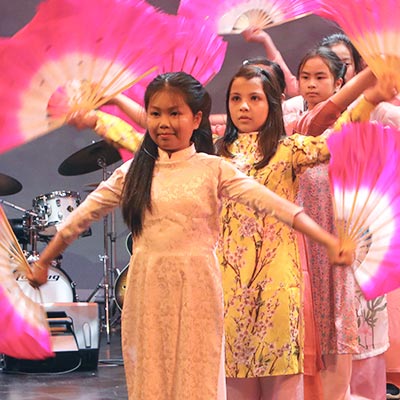
Being able to connect to True Happiness is the result of an education where wisdom becomes the life purpose in whatever professional fields and personal life students will chose to venture. At Hoa Nghiem Buddhist College, students learn to connect to their inner peace where they find the peaceful strength to experience True Happiness. During their schooling, students learn to feel that True Happiness is not about having and possessing things. From introspection, deep listening as well as the progressive development of a clear mind and a clear heart, they know that True Happiness is about being.
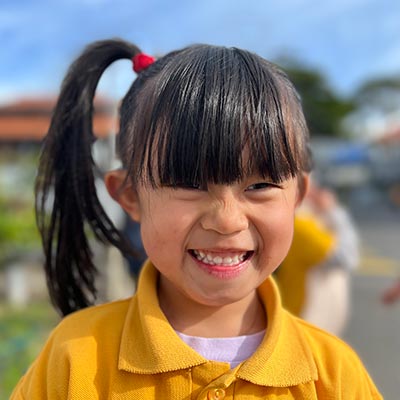
The findings of international research carried out by UNESCO have shown that the most important learning to acquire if our children are to live sustainably in our century is to develop not only their quality of learning, but also and above all their quality of being. Learning to Be in the 21st century will be achieved through four essential learning dimensions: Learning to Be Wise, Learning to Learn Holistically, Learning to Do Ethically and Learning to Live Together.